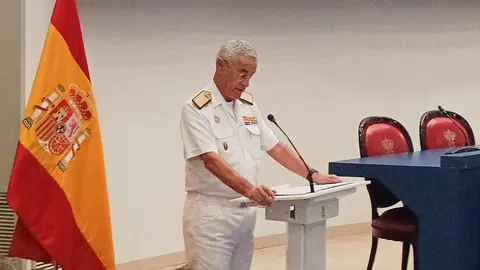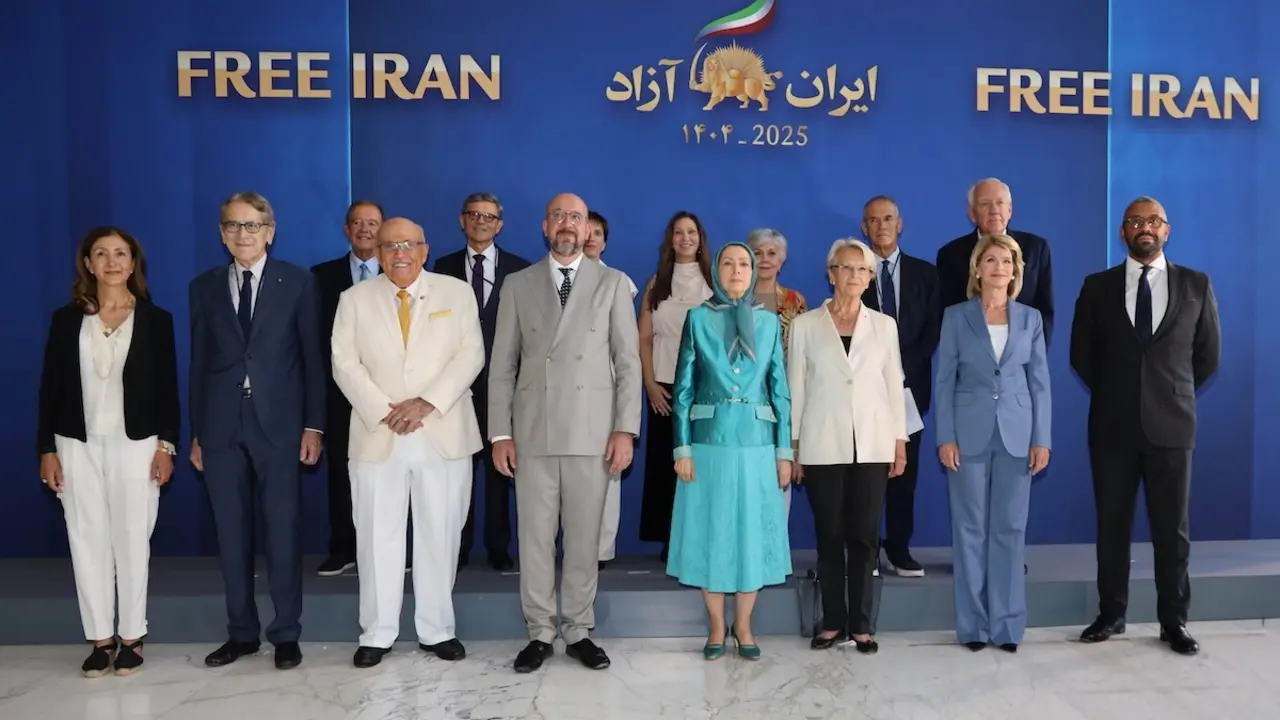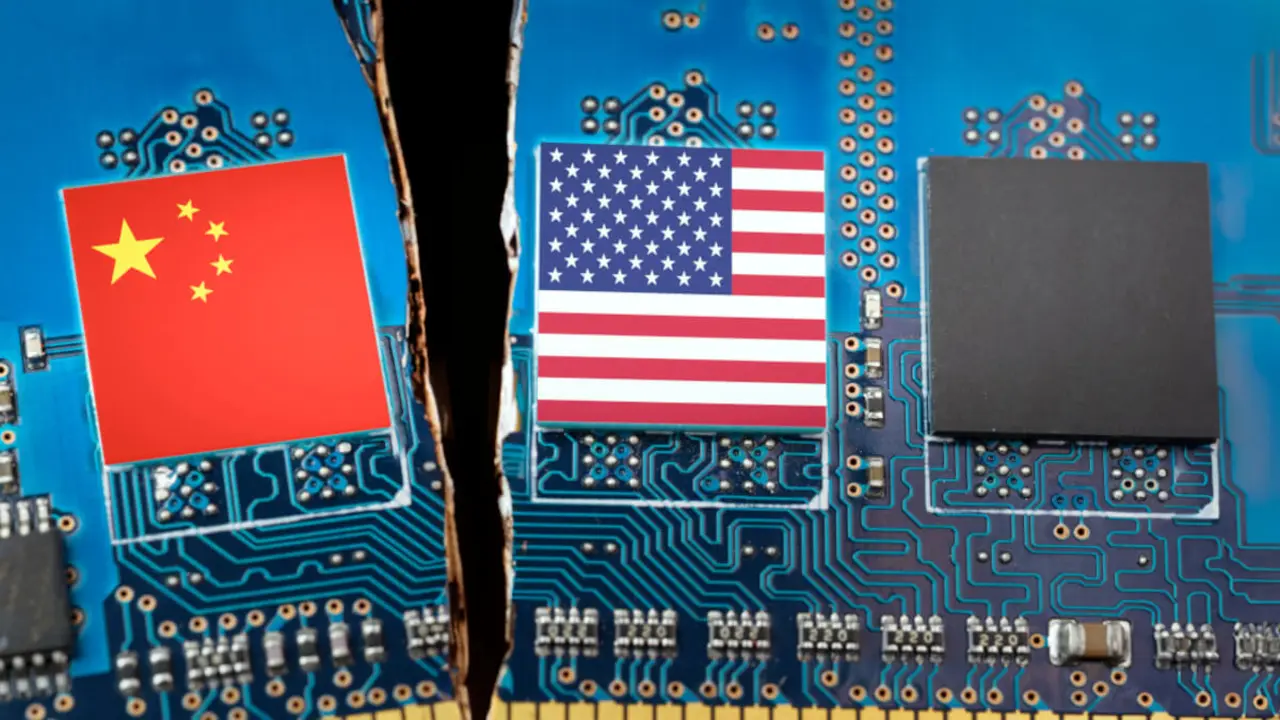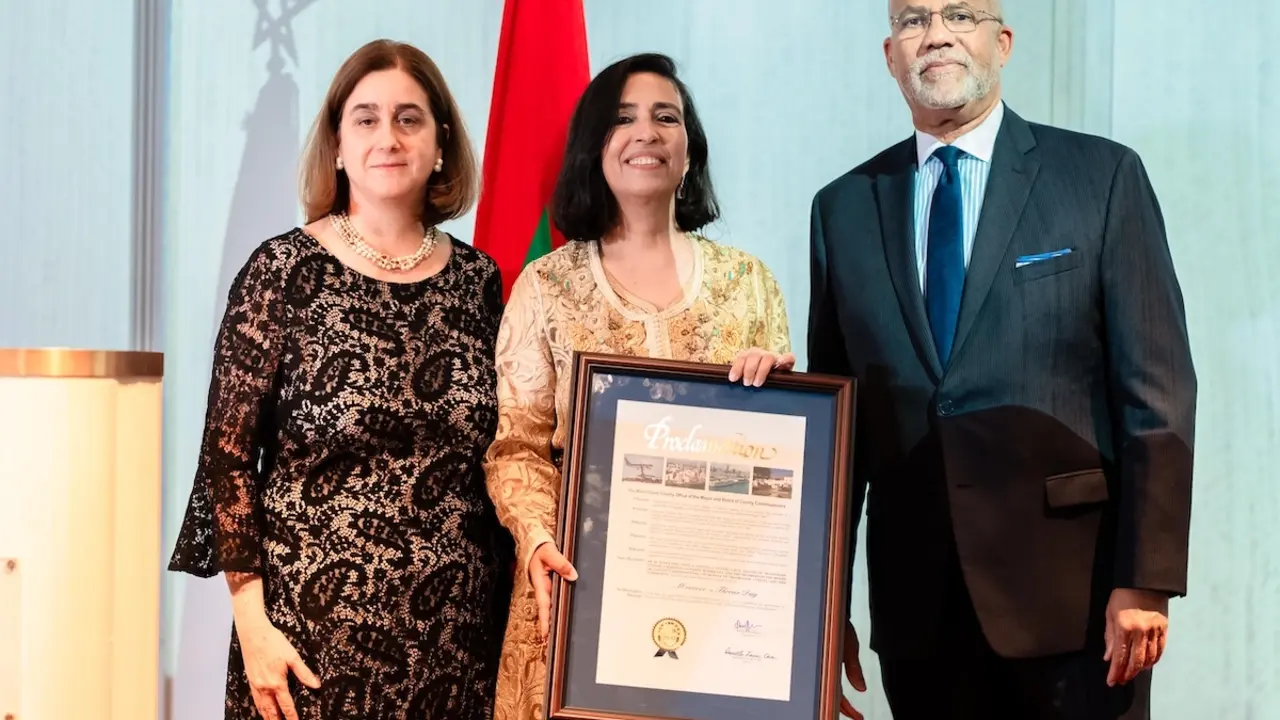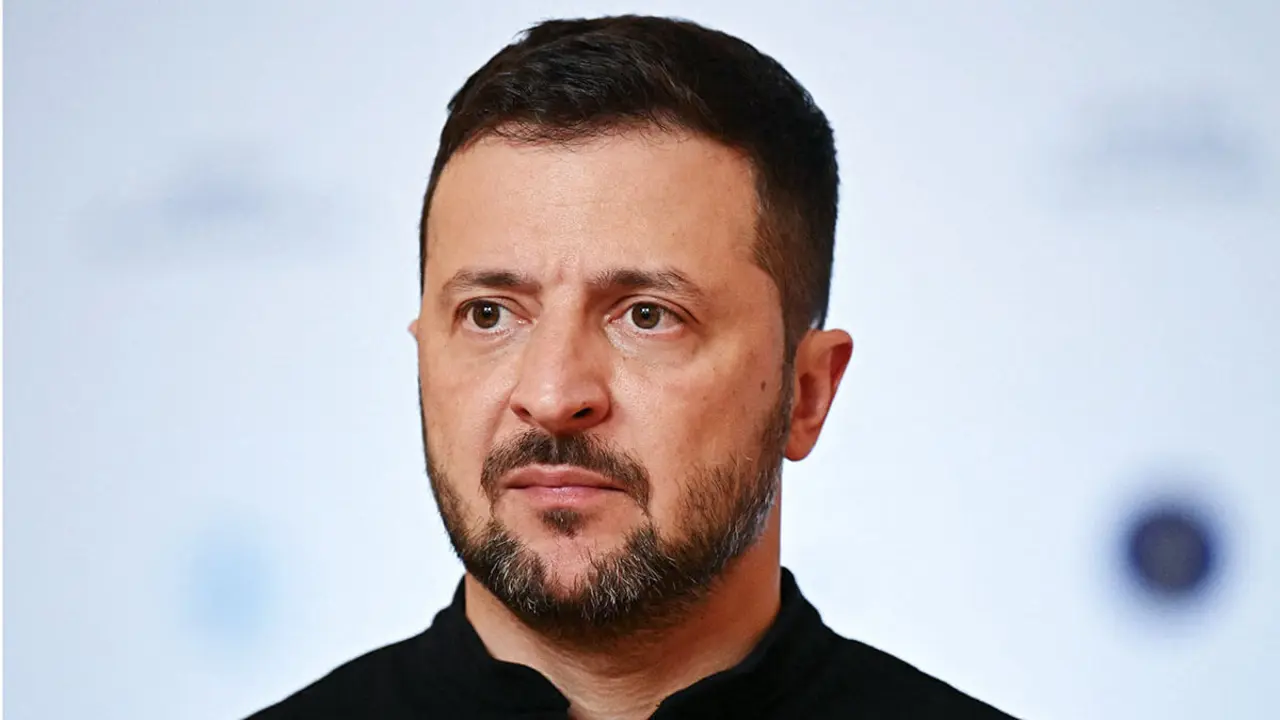The Spanish Navy charts a course for 2050
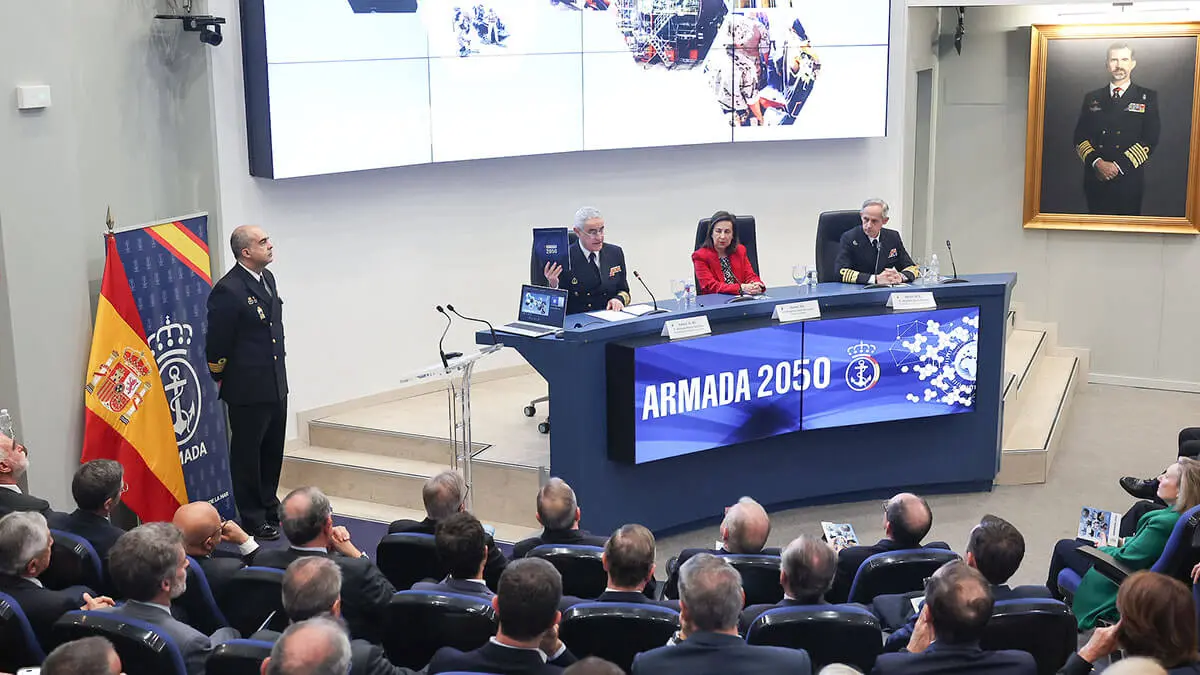
- To be an international benchmark in the maritime sphere
- Reinforcing the technological and value-based training of personnel
The Spanish Navy has just defined the strategic axes that will define its progressive evolution in the medium and long term in order to become a fundamental instrument of the State's external action in 25 years' time, by the mid-21st century.
He did so through the mouths of its two top leaders, the Chief of the Naval General Staff, Admiral Antonio Piñeiro, in office since 27 April 2023, and his second-in-command - 2nd AJEMA - since April of this year, Admiral Gonzalo Sanz.
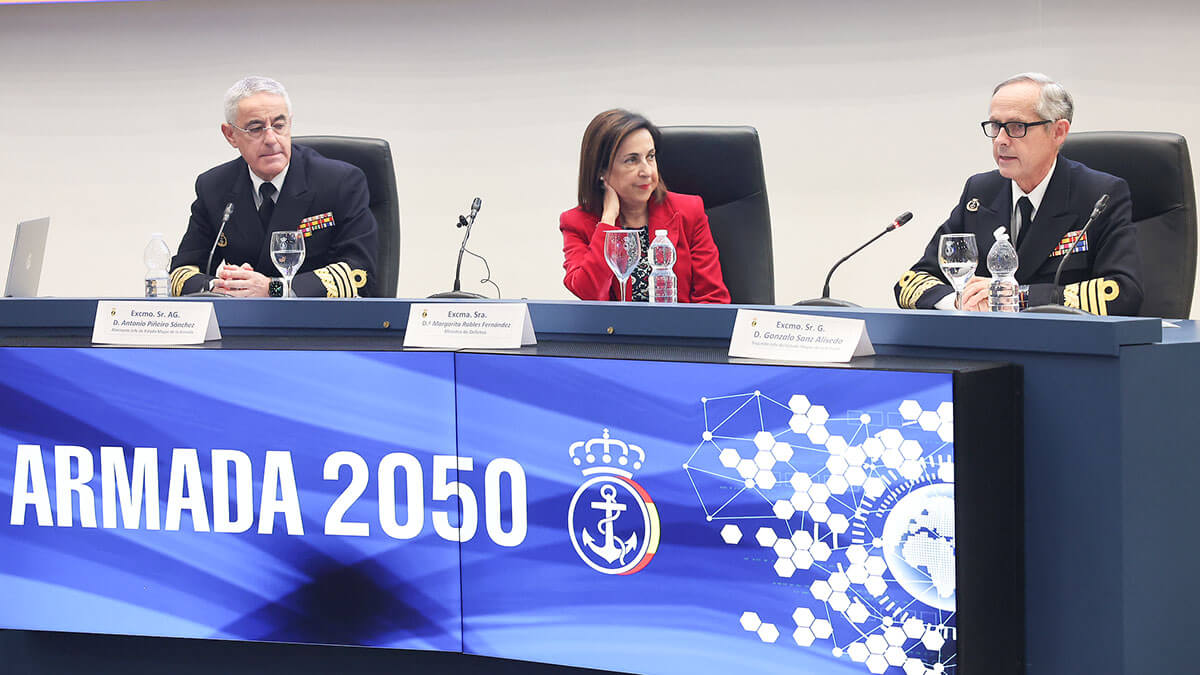
Before an expectant audience gathered on 4 December at the Navy's headquarters in Madrid, both military chiefs explained the main guidelines and details of the document entitled ‘Armada 2050’ to the most important authorities of the Ministry of Defence, the institution's senior commanders and representatives of the Spanish Army, Air Force, Space and Civil Guard, as well as the main executives of the national defence industry, the academic world and the defence attachés of friendly countries.
The AJEMA set out the general lines that outline the course of a Navy in a position to face the challenges of the future, for which it envisages the need to have ‘improved capabilities’ that will enable it to ‘continue to be decisive and relevant’ in its three essential and exclusive functions that contribute to joint action: the projection of naval power on land, control of the sea and maritime action.
The head of the Navy wanted to make the document public because he is aware that ‘the challenges we face must be shared with the civil society we serve’, and because the process of strategic alignment ‘that we are now initiating will serve as an impulse and guide to build a modern and prepared Navy (...) and to be ‘the engine of change in the short term’.
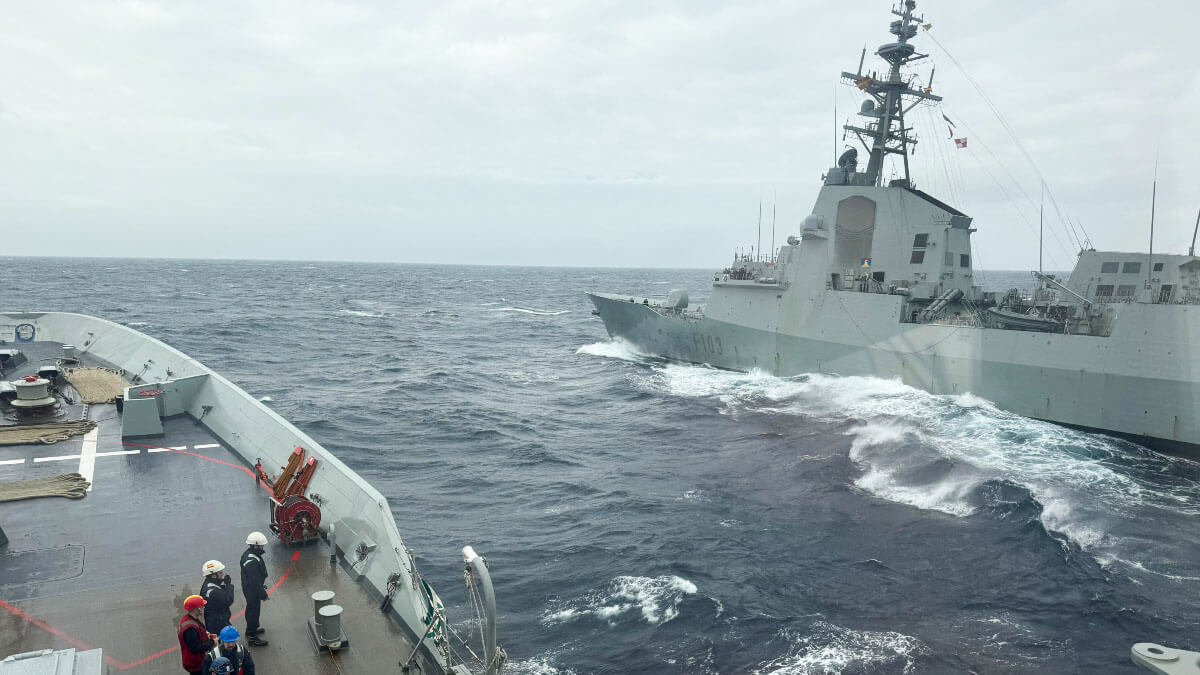
To be an international benchmark in the maritime sphere
Admiral Gonzalo Sanz pointed out that the step the institution has just taken initiates a process ‘at all levels’, which also involves a ‘cultural change’, given that ‘the Navy we have today is a design from the 1990s, which has been affected by the lack of resources since 2008’. However, ‘the change in the strategic and financial scenario as of 2022 has made it possible to initiate a sequence of progress in capabilities in three phases: recovery, modernisation and evolution’.
With the aim of having a ‘balanced, efficient Fleet in the future, capable of fulfilling its mission with guarantees and of contributing the Navy's specific capabilities to the joint structure’, Admiral Sanz revealed that the foresight study that has materialised in the document ‘Armada 2050’ is the result of two years' work.
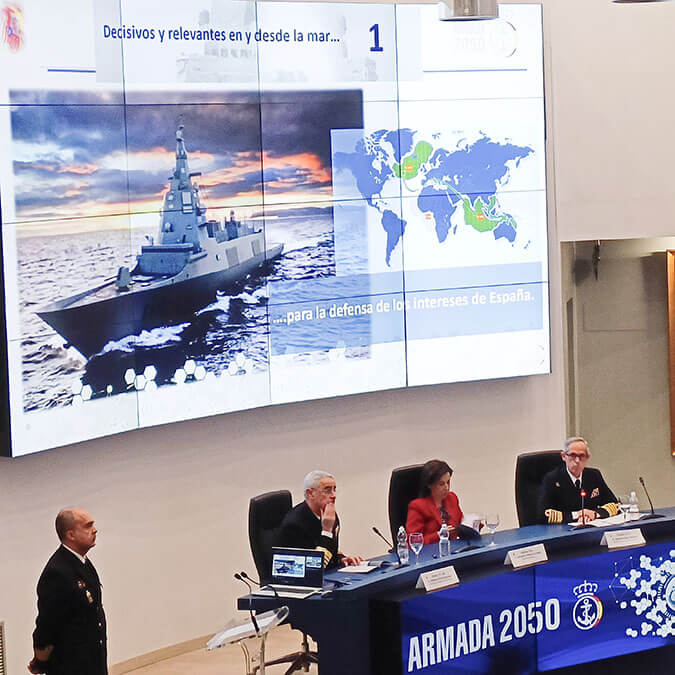
Different teams of admirals, generals and senior officers of the Navy's General Staff with command experience in national and international destinations and operations afloat and ashore, have contributed their knowledge before it was endorsed by the AJEMA. The content of ‘Armada 2050’ is a roadmap that establishes a ‘review of the Navy's mission and functions’, which has received final advice from the Spanish branch of McKinsey & Company, one of the three most important and prestigious international strategic consultancies in the world.
In essence, the 2nd AJEMA pointed out that the aim of the document is to create a Navy ‘with the capacity to anticipate events, to be an international benchmark in the maritime sphere, and to promote technological innovation and national industry’. He summarises this in four pillars that he describes as ‘fundamental’.
Firstly, the Navy in the mid-21st century aspires to ‘be decisive and relevant in and from the sea’. This requires it to be operational and efficient, with the capacity to win in the most demanding scenarios and to operate with partners and allies, perfectly integrated in the multi-domain’.
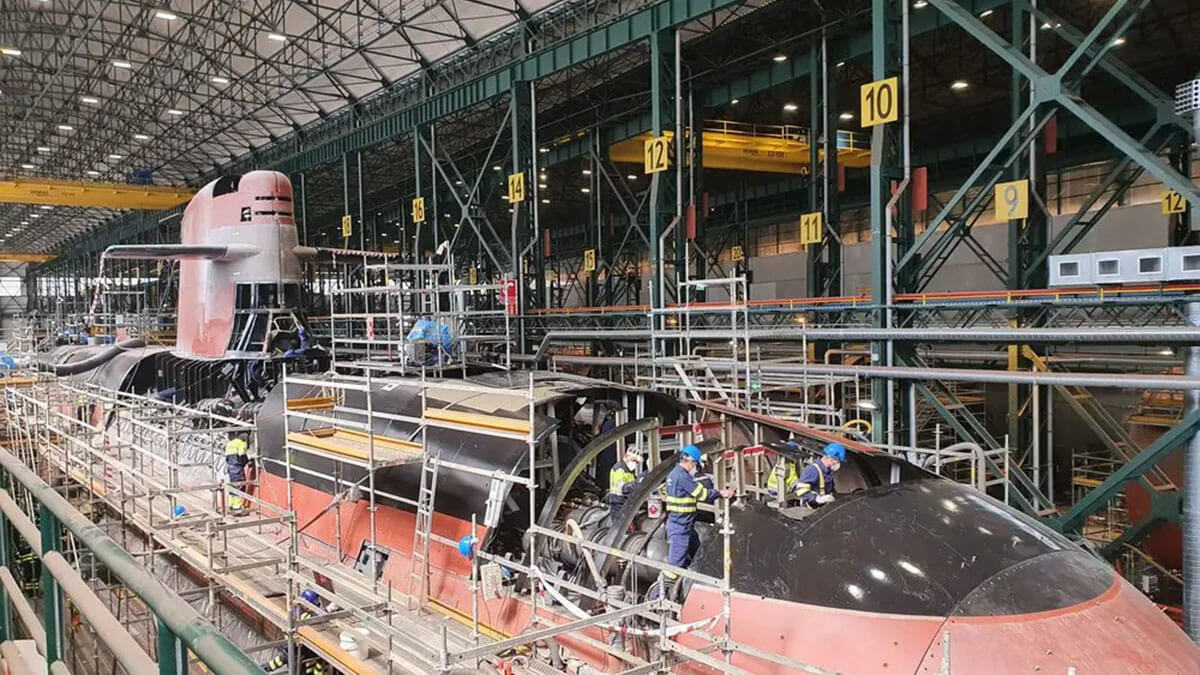
Reinforcing the technological and value-based training of personnel
The second pillar focuses on the desire for its staff to ‘be exemplary’, for which it wants to provide them with excellent training, both in technology and in values. The third foundation on which ‘Armada 2050’ is based is to be at the forefront of technology, for which the aim is to ‘adapt new developments to the Fleet's units and to have resilient systems that guarantee the force's operability in complex environments’.
The fourth and final fundamental pillar is to be ‘efficient in resource management and to have an innovative sustainment model’: of course, the strategy stresses that all of the above requires ‘obtaining the necessary resources, consolidating our defence industry and having strong social and institutional support’.
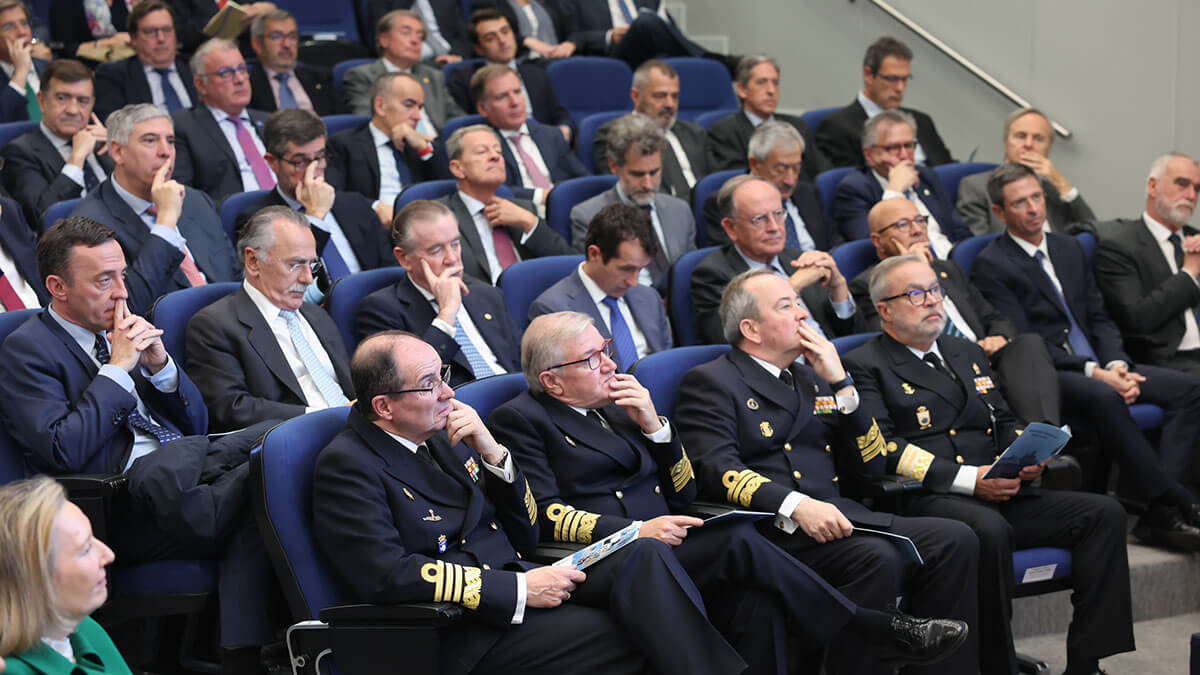
‘Armada 2050’ is a record of the strategic and operational environment in which nations are caught up in a ‘systemic competition’ that has shifted the global centre of gravity towards the Indo-Pacific, while ‘conventional warfare has returned to Europe’, reinforcing defence alliances and a very rapid evolution of technologies and procedures used on the battlefield.
In this sense, Admiral Sanz pointed out that there is a ‘growing trend towards the fusion of the traditional battle spaces, land, sea and air, into a single, multi-domain battle space, in the combat cloud environment’. With regard to an internal organisational change in the Navy, he referred to the intention to ‘simplify routine processes, make the relationship between commanders more fluid, eliminate duplication, favour agile decision-making, all with a view to the organisation having a greater combat mentality’.
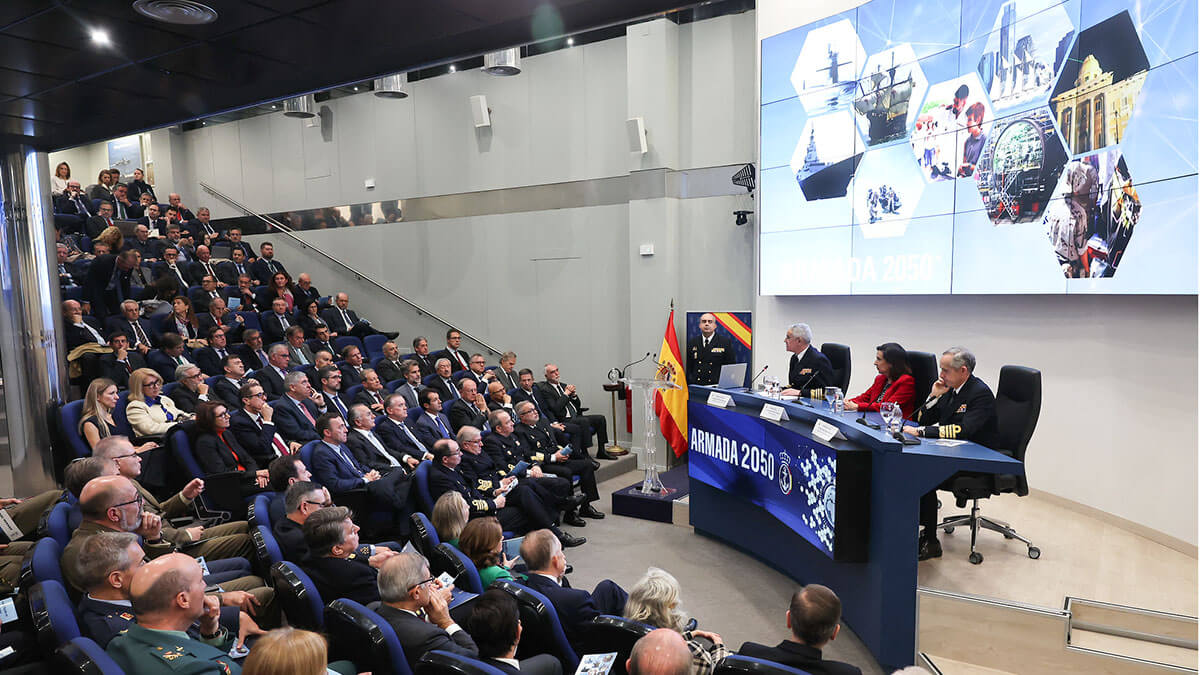
The presentation of the ‘Armada 2050’ document in the auditorium of the Navy Headquarters was presided over by the Minister of Defence, Margarita Robles, accompanied by the Secretary of State for Defence, Amparo Valcarce, the Undersecretary, Adoración Mateos, and the Secretary General for Defence Policy, Admiral Juan Francisco Martínez Núñez. The ceremony was closed by the head of the department, who said that ‘there should not be the slightest doubt that the objective of continuing to work to ensure that the 2050 Navy has all the best is the clear and unequivocal commitment we are working on’.


